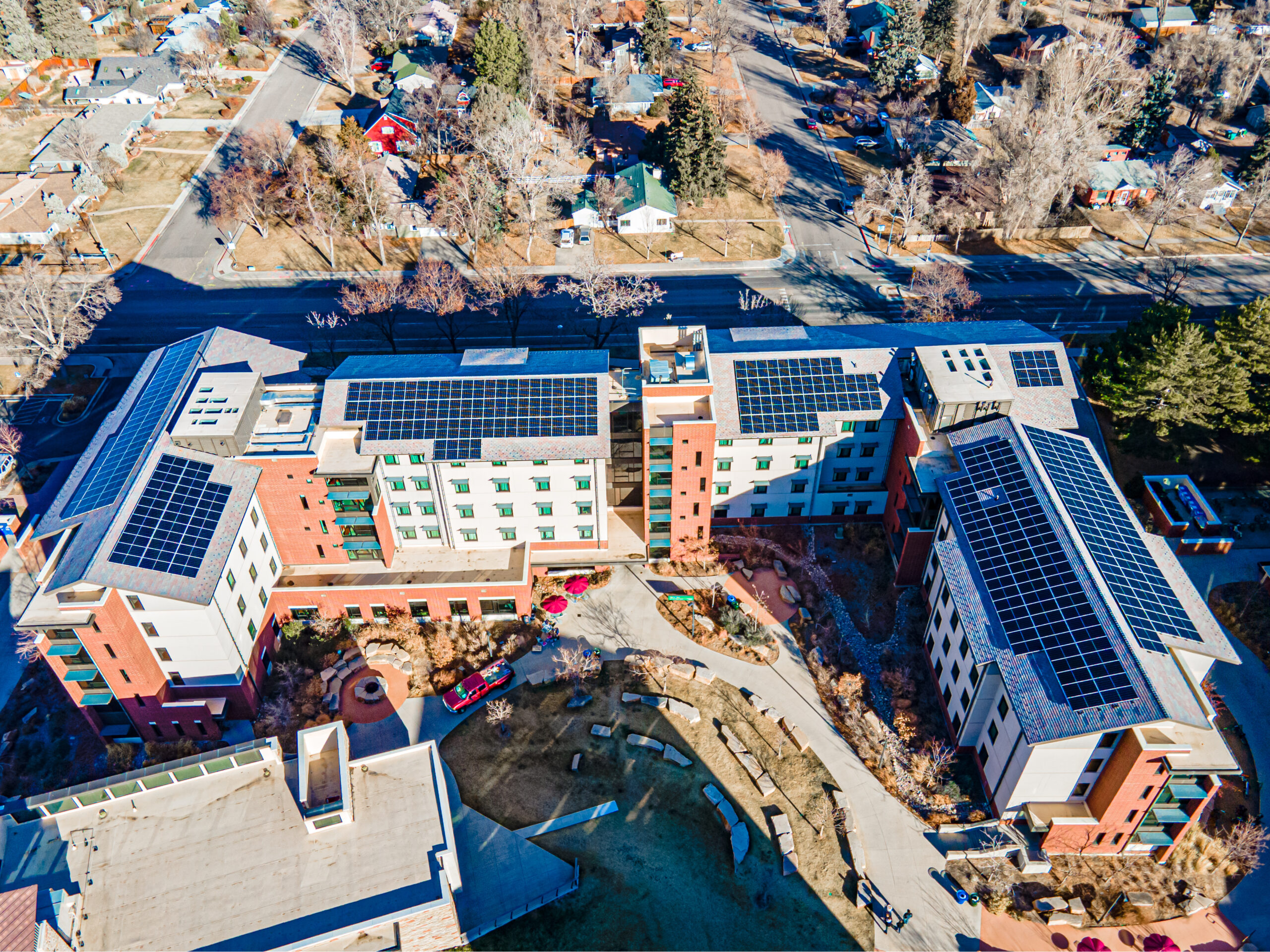Colorado State University (CSU) is now 20 steps closer to its goal of 100 percent renewable electricity by 2030. Yesterday, CSU, project partners Namaste Solar, Solaris Energy and Standard Solar, students, staff and state government officials gathered on campus to celebrate the University’s milestone deployment of solar energy on campus.
Over a two-year period starting in 2020, Namaste Solar, an employee-owned cooperative co-developed, designed and constructed the 4.25 MW (DC) of solar capacity across 20 sites on four CSU campuses in Fort Collins. Solaris Energy, a fellow Colorado-based Certified B Corporation, co-developer, and initial owner of the project, provided the legal structuring, financing and development oversight to make the project a reality.
Standard Solar, a national leader in the development, funding, operation and ownership of commercial and community solar, is the project’s long-term owner and operator.
“Our goal was to develop and finance the project in a way that provided long-term operational expense savings to CSU with minimal upfront cost, allowing the University to put those savings toward students and innovation,” stated Nick Perugini, vice president and co-owner of Solaris Energy. “We’re proud to be a part of a project that proves the financially beneficial solar possibilities today and will remain a shining example for generations to come.”
CSU will receive solar electricity through a long-term Power Purchase Agreement. This fixes the solar electricity rate charge to CSU for 28 years, providing a hedge against the rising price of fossil fuel electricity.
“We will be paying the same for the power coming out of those solar arrays in 2050 as we do today,” said Carol Dollard, an energy engineer for CSU who helps manage the design and installation of renewable energy systems. “It’s a great investment for the University and it allows us to get solar on our buildings at a very low financial risk.”
CSU will retain ownership of Renewable Energy Credits (RECs) attributed to the new systems, which will allow the portfolio of projects to be a major contributor toward CSU’s commitment to 100% renewable electricity by 2030 and carbon neutrality by 2040. Owning RECs is certified proof that renewable energy is being used without having to directly own the solar installations.
“When institutions like CSU work with local businesses such as Namaste Solar it amplifies the positive impacts to the local community,” said Jason Sharpe, CEO and co-owner of Namaste Solar. “This project supported 42 permanent jobs at Namaste Solar alone. In all, this multi-year project employed nearly 70 people and involved 16 companies, most of them being local. This benefits local families, the Fort Collins community, and Colorado’s economy.”
With 17 out of 20 sites completed, the portfolio is estimated to be finished by early 2023. The sites include ground mounts and rooftop installations such as Johnson Family Equine Hospital, Laurel Village, Richardson Design Center, and the Agricultural Research, Development and Education Center (ARDEC). Combined, the systems will use 10,628 total panels and are expected to annually produce the equivalent of powering 827 homes with solar electricity throughout the system’s decades-long lifetime.
“Standard Solar is a proud participant in this partnership bringing solar energy to CSU, where more than 32,000 students live and learn,” said Shaun Laughlin, director of business development at Standard Solar. “Higher educational institutions recognize the importance of transitioning to renewable energy, particularly solar. Not only does it provide significant cost savings and help reduce carbon emissions, but it also meets the demands of the generation attending colleges and universities. And they’ve said over and over that they want clean energy. Higher educational institutions seeking ways to cut operational costs, make a positive impact on the climate and serve their students should consider solar energy.”









